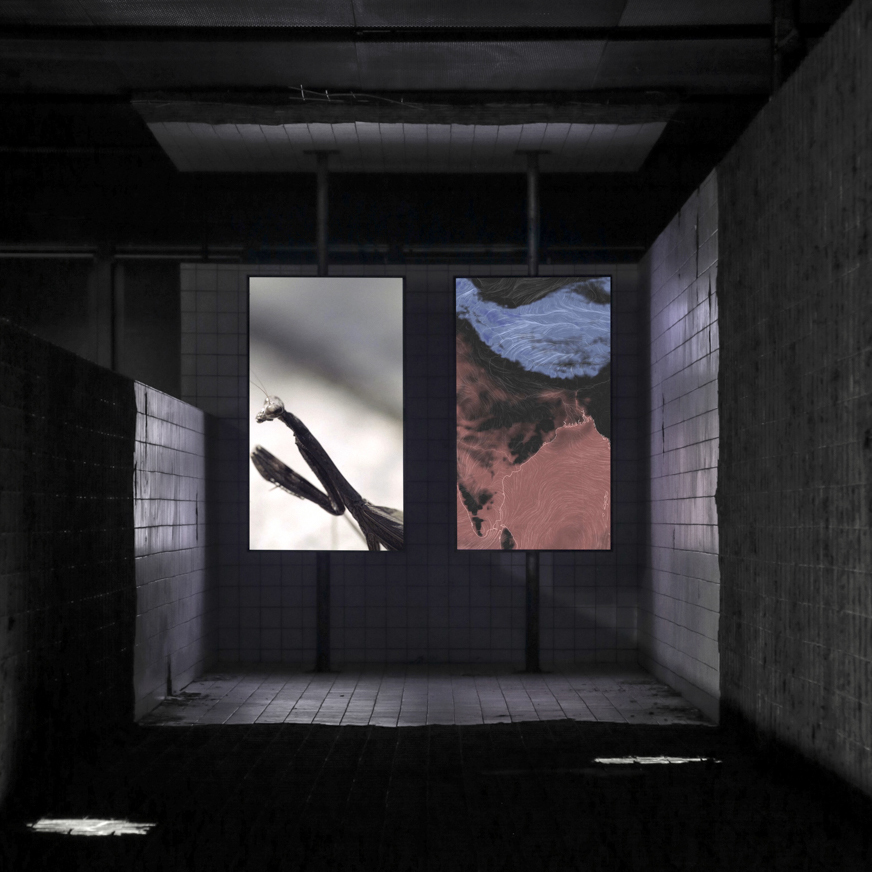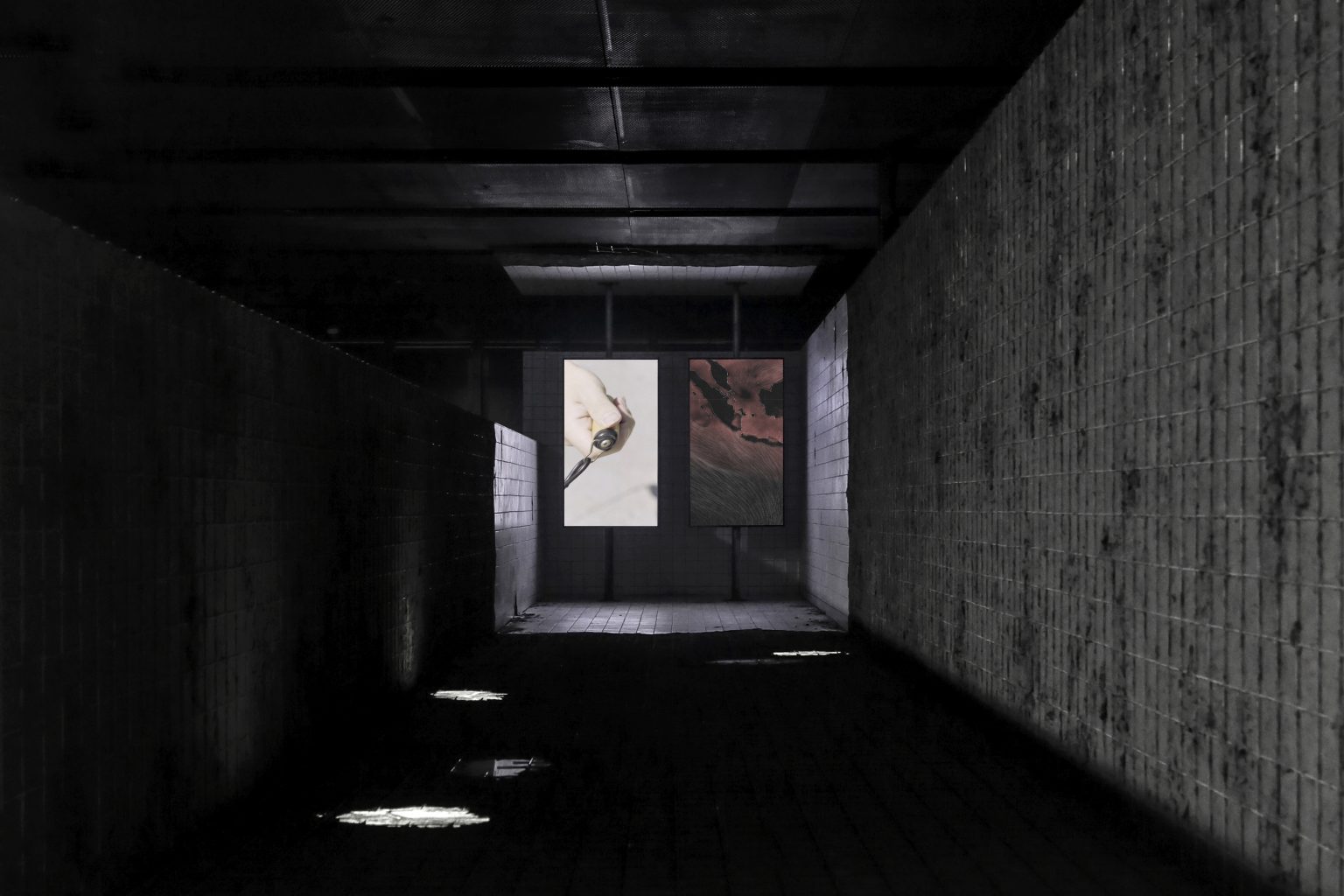Moojin Brothers is a media artist group that consists of Jung Mujin, Jung Hyoyoung and Jung Youngdon. They capture strange and eccentric senses and images from stories of people around them, and highlight the new and unfamiliar aspects in our live. They reconstruct the lives of ordinary people in various artistic ways and capture various artistic meanings from them Also, they develop myths or legends from deep inside our lives, historical exploration of time and space and reinterpretation of classical text into film language.

2_무진형제
1. Please introduce yourself and your work.
Moojin Brothers is a media artist group that consists of Jung Mujin, Jung Hyoyoung, and Jung Youngdon.
2. How did you find it to take part in the project Random Access?
The installation of The Door into Summer is integrated into a theme without reproducing the content of the video. It should be installed considering all elements including video, sculpture, and spatial composition. In order to create the spatial ruins, we used wood, filled the space with wire mesh and cerafix, and even constructed tiles, so that it was almost close to a kind of space remodeling. For that reason, The Door into Summer is one of our most memorable projects. It is because rather than just being physically tired, you have to think about how to recreate the elements in The Door into Summer in a given space at every exhibition. In fact, the mezzanine may probably be the most difficult place to deal with. We had to make a space of ruins in a long, open space that is accessible from any directions. So the process of installation was very hard, but it was fun to solve difficult problems one by one, day by day.
3. Starting from stories around us, your works illuminate new and unfamiliar parts of our lives. You capture a diversity of artistic meanings, and develop them into visual language, by reconstructing the everyday lives of ordinary people in artistic ways. As a curator of Random Access, I thought that these are in line with the artist Nam June Paik, who drew artistic stories from diverse daily lives and collaborated with many colleagues. Which part of your work do you think is personally or artistically connected to Paik?
We don’t know which point of our work is obviously related to him. We’d like to talk about what especially impresses us whenever we see his work. TV Buddha is an exemplary work. We always see Paik’s past in his work. It is not simply the objectified time of the past, but some part of the past embodied in himself. The reason why we pay attention to his embodied past is because it becomes a Zen dialogue to be shared with viewers while being somehow presented in his work rather than remaining fixed. As an old Buddhist monk used to be called a dry shit stick, Paik in placing the statue of Buddha and TV together, seems to draw our attention to a profound conundrum of Buddhism, “What is Buddha?” raising a question about contemporary humanity. It appears that what Paik explored was not Buddhism as a religion, but as a means of self-contemplation. In Buddhism, the place where I stand now is most important. My current state of being ignorant is also the moment of enlightenment. Paik probably understood this. He did not suggest seeing Buddha as an object; rather, he brought up the question of how to contemplate on Buddha like a dry shit stick, confronted with TV, a new condition of the times. When a specific technology newly emerges, our discourses and discussions tend to be focused only on the binaries of right and wrong, humans and non-humans. However, Paik asks us who are even watching the Buddha statue on TV, what and how we are thinking in what kind of conditions of the present times, what knowledge and ignorance surround us. Paik’s work always poses these questions to Moojin brothers.
4. Tell us more about The Door into Summer showcased in Random Access.
The Door into Summer originates from our curiosity about a boy who does 4,000 jump ropes every day, saying he is too short to do anything. So we filmed the boy’s movements. Images of the jump-roping boy are seen in juxtaposition with another video showing the flow of the Earth’s atmosphere in the summer, while making a contrast with an old insect. Both the boy and the world keep following their own cycle of birth, growth, harvest and storage, even though their flows seem more or less contradictory and twisted. You need to go up the stairs to watch the video installed at the end of the mezzanine. Moojin Brothers attached the pieces of the boy’s contradictory words made of transparent acrylic to the handrails. The boy’s words and his actions are placed at both ends of the mezzanine, and the long ruins lie in between. There are not only the standardized world surrounding them but also the world of fixed knowledge and language. Moojin Brothers portrayed the world of ruins as a space with only cracked and broken tiles and dark skeletons left. The lights in the space beam through the seven gleaming images of cracks placed on the floor. After touching the pieces of the boy’s words, passing through the dark and rough ruins to finally watch the video about the boy, what will the audience think about? Since all parts of the work are intimately connected to one another, the boy’s words and the world of ruins are always set up together.
5. Three years have passed since then. You have participated in various exhibitions. Could you tell us about the activities you have engaged in since Random Access and about your future plans?
Not long after the work with the boy, we began our new project The old man was dreaming about the lions. This video consists of two parts: volume 1 depicting a day of an old man who has lived his entire life in the same village for nearly a century; and volume 2 dealing with tales of the dwelling of three generations along with virtual images and scenes of carving a sphere. With this video, we participated in art exhibitions and film festivals. In 2019, Moojin Brothers won the Korean Video Art Production Award co-organized by Han Nefkens Foundation and the Buk-Seoul Museum of Art, to produce Orbital Squares which is currently on show. This video work portrays humans living within a capitalist system that embraces cutting-edge technology to capture the orbits of various lives in a standardized manner. Regarding our future plans, we will concentrate on the production of the works that we are currently planning.
6. Do you have any comments or episodes you would like to share about Random Access?
Every member of Moojin Brothers is usually quite sensitive to sound, so it is difficult for us to put up with repetitive sounds or music. But there was only one exception. Right under the mezzanine space at Nam June Paik Art Center was Paik’s TV Garden, so we had to listen to the sound of the video all day during the installation period. Strangely enough, the sound never irritated us. To create a space of ruins, we had to apply cerafix to the entire space of the mezzanine space for several days. What we saw when we stretched to relieve backache was TV Garden. Every time we took a rest, we watched the work and could brace ourselves up and concentrate on our work. It really became a garden to us. We do not know why, but whenever we think of the moment of installation, TV Garden comes to our minds as well.





